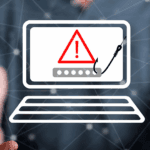Artificial intelligence has transformed from science fiction into a powerful tool for both legitimate business applications and sophisticated criminal schemes. Among the most concerning developments is the rise of deepfake fraud, where AI technology creates convincing fake videos, images, and audio that can be nearly indistinguishable from authentic media.
Understanding the Growing Threat of Deepfake Fraud
Deepfakes use artificial intelligence and machine learning algorithms to manipulate or generate visual and audio content with a high potential to deceive. These technologies can superimpose existing images and videos onto source material or create entirely new synthetic media that looks remarkably authentic.
The scale of this threat is staggering. According to recent FBI data, more than 4.2 million fraudulent scheme reports have been documented since 2020, with financial damages exceeding $50.5 billion. What’s particularly alarming is the growing percentage of these incidents now involving deepfake technology.
Businesses face unique vulnerabilities to deepfake fraud. With corporate hierarchies and established payment procedures, criminals can leverage organizational trust to execute sophisticated scams. For instance, in one notable case, fraudsters used a deepfake video conference call to impersonate a company’s chief financial officer, successfully convincing the accounting department to wire $25 million to a fraudulent account.
Common Types of Deepfake Scams Targeting Businesses
The most prevalent deepfake scams targeting businesses include executive impersonation schemes, where criminals create convincing audio or video of C-suite executives directing employees to transfer funds or share confidential information. In these “CEO fraud” scenarios, employees receive what appears to be an urgent message from their boss requesting an immediate wire transfer to close a confidential deal.
Investment scams using deepfakes of financial experts have also proliferated. These typically feature synthetic videos of well-known investors enthusiastically endorsing fraudulent investment opportunities, lending false credibility to schemes designed to steal corporate funds.
Vendor impersonation represents another growing threat vector. Scammers create deepfake communications appearing to come from trusted suppliers, requesting payment redirections to new bank accounts. Without proper verification procedures, accounting departments may process these requests without question, resulting in substantial financial losses.
Additionally, deepfakes facilitate sophisticated account takeover attempts and new account opening fraud, using synthetic identities to bypass security measures and gain access to corporate financial accounts or establish new fraudulent relationships with financial institutions.
How to Spot Deepfake Content: Red Flags and Warning Signs
Despite advances in deepfake technology, these synthetic media typically contain subtle flaws that attentive observers can detect. Training your team to recognize these indicators can significantly reduce your organization’s vulnerability.
Technical Indicators of Deepfake Media
Visual anomalies often provide the first clues of manipulation. Pay close attention to facial features, particularly around the eyes, lips, and hairline, which frequently appear blurry or distorted in deepfake content. The technology struggles to consistently render these complex areas, creating noticeable inconsistencies.
Eye movements merit special scrutiny. Natural blinking occurs at irregular intervals and typically lasts between 100 and 400 milliseconds. Deepfake subjects often display unnatural blinking patterns, either too frequent, too slow, or too mechanically regular. Similarly, watch for irregular eye movements that don’t naturally track with conversation or environmental stimuli.
Audio-visual synchronization problems represent another common deepfake indicator. Look for lip movements that don’t precisely match the spoken words, creating a subtle but perceptible disconnect between what you see and hear.
Lighting and shadow inconsistencies frequently betray synthetic media. Natural lighting creates consistent shadow patterns that follow physical laws, while deepfakes may show shadows that don’t correspond properly with light sources or that shift unnaturally throughout a video.
Voice characteristics can also reveal manipulation. AI-generated voices often lack the natural variations and emotional inflections of human speech, resulting in flat, mechanical, or emotionless vocal qualities that sound slightly “off” compared to natural conversation.
Contextual Warning Signs
Beyond technical flaws, contextual elements often indicate potential fraud. Be particularly wary of urgent requests for money transfers or sensitive information, especially when they deviate from established protocols or come with artificial time constraints designed to pressure quick action without verification.
Unusual communication patterns from known contacts should trigger immediate suspicion. If a typically formal executive suddenly uses casual language, or if communication arrives through non-standard channels, these deviations warrant additional verification.
High-pressure tactics represent another red flag. Legitimate business communications rarely demand immediate action without allowing for proper verification procedures. When combined with requests to use unfamiliar payment methods or platforms, such urgency strongly suggests fraudulent intent.
Essential Protection Strategies for Your Business
Protecting your organization requires implementing comprehensive safeguards across multiple domains, from procedural controls to technical solutions and human awareness.
Employee Training and Awareness Programs
Your workforce represents both your greatest vulnerability and your strongest defense against deepfake fraud. Regular awareness training should educate employees about the nature of deepfakes, how to identify suspicious content, and proper response procedures.
Consider conducting simulated deepfake attacks to test employee vigilance and reinforce training. These controlled exercises help staff experience realistic scenarios without financial risk, building confidence in their ability to recognize and respond to actual threats.
Creating a security-first culture proves essential for long-term protection. Encourage employees to approach unusual requests with healthy skepticism and praise those who verify suspicious communications rather than penalizing the extra time required for security checks.
Develop clear incident response protocols for suspected deepfake encounters. Employees should know exactly whom to contact and what information to document when they encounter potentially fraudulent communications.
Technical Safeguards and Verification Methods
Implement multi-layered verification processes for financial transactions, particularly for payments exceeding certain thresholds or involving new recipients. These should include:
- Secondary communication channel verification: Confirm requests received through one channel (email, phone) via a different, previously established channel.
- The “four eyes” principle: Require two separate authorized individuals to approve significant financial transactions.
- Callback verification: Use previously established contact numbers, not those provided in the current communication.
- Transaction monitoring: Implement systems that flag unusual payment patterns, destinations, or amounts for additional review.
Consider deploying AI-based detection tools specifically designed to identify deepfake media. While no solution provides perfect protection, these technologies can serve as an additional defensive layer, particularly for organizations handling high-value transactions or sensitive information.
Verification Techniques and Authentication Best Practices
Establish secure communication protocols with vendors, partners, and key external contacts. Document these procedures clearly and ensure all parties understand their importance. Regular review and updating of these protocols helps maintain their effectiveness against evolving threats.
For key business relationships, consider creating verification questions or codewords that must be exchanged during sensitive transactions. These should reference information not publicly available but known to legitimate parties, making them difficult for fraudsters to reproduce even with advanced intelligence gathering.
For visual content verification, reverse image searches and metadata analysis can help authenticate images or identify manipulated media. Digital watermarking of official company images and videos adds another layer of protection against unauthorized manipulation.
Building a Human Firewall
Your most effective defense remains the human judgment of properly trained employees. Train staff to pause and evaluate urgent requests, particularly those involving financial transactions or sensitive information. The few minutes required for verification pale in comparison to the potential financial and reputational damage of successful fraud.
Create a culture where questioning suspicious content is not just allowed but expected and valued. Employees should feel comfortable challenging requests that seem unusual, even when they appear to come from senior executives.
For family-owned businesses or smaller organizations where personal relationships play significant roles, consider establishing personal authentication systems with family members. These might include agreed-upon phrases or references that would be difficult for an AI to replicate without specific personal knowledge.
Limiting Your Digital Footprint and Exposure Risk
The raw material for deepfakes comes primarily from publicly available information, making digital footprint management a critical preventive measure.
Data Minimization Strategies
Conduct regular audits of your organization’s online presence, including corporate websites, social media accounts, and professional networking platforms. Remove unnecessary personal information about key executives and limit the quantity and quality of published photos and videos that could serve as source material for deepfakes.
Consider watermarking important business photos and videos with visible or digital watermarks that would be difficult to remove without leaving evidence of manipulation. For corporate headshots and official imagery, use professional photography services that can implement subtle anti-deepfake measures.
Regularly monitor for unauthorized use of company imagery or executive likenesses across the internet. Commercial monitoring services can alert you to potential misuse, enabling faster response to emerging threats.
Opt out of data broker services and people search sites that aggregate and sell personal information about your executives and key personnel. While time-consuming, reducing this publicly available data significantly complicates the creation of convincing deepfakes targeting your organization.
Response and Recovery: What to Do If You’re Targeted
Despite best preventive efforts, sophisticated attackers may still target your business. Having clear response procedures can minimize damage and aid recovery.
If you suspect deepfake fraud, immediately document the suspicious communication, including saving copies of videos, images, or audio files before they potentially disappear. Notify your internal security team and relevant executives according to established incident response protocols.
Report the incident to appropriate authorities, including local law enforcement, the FBI’s Internet Crime Complaint Center (IC3.gov), and affected financial institutions. Provide detailed documentation to support investigation efforts.
For significant incidents, consider engaging specialized cybersecurity professionals with experience in digital forensics and incident response. These experts can help determine the full scope of the attack, identify vulnerabilities that enabled it, and strengthen defenses against future attempts.
Building Long-term Resilience
Long-term protection requires continuous adaptation to evolving threats. Regularly update security awareness training programs to address emerging deepfake techniques and technologies. Maintain open communication with industry peers and security organizations to stay informed about new attack methodologies and effective countermeasures.
Consider investing in advanced detection technologies and strengthening authentication systems, particularly for high-risk functions like financial approvals and data access. While these solutions require investment, they typically prove far less costly than recovering from successful fraud.
Finally, develop comprehensive business continuity plans that specifically address deepfake scenarios. These should include communication templates, stakeholder notification procedures, and recovery steps designed to minimize operational and reputational damage.
By combining technical defenses, procedural safeguards, and human awareness, your organization can significantly reduce its vulnerability to deepfake fraud while building resilience against this evolving threat landscape. The investment in prevention today will yield substantial protection against potentially devastating losses tomorrow.





